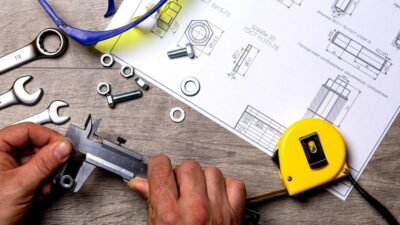There is a gulf between what people worry about, what gets reported and what is actually harmful to our health. The Centers for Disease Control and Prevention has shown that the leading cause of death among under-45s in America is unintentional accidents. Across all age groups, unintentional accidents are the third most important cause of death in America.
Statistics such as these remind us that where we feel most safe is often where things go terribly wrong, especially for young children and seniors. There are, thankfully, things we can do to prevent these accidents and this piece will provide a few tips.
Table of Contents
Falls
Falls are some of the most common household accidents and occur most frequently among the elderly. Falls can lead to a variety of serious injuries, such as broken bones, concussions and even death. The World Health Organization (WHO) says that there are about 37.3 million falls a year which are bad enough to need medical attention, with 646,000 people dying from falls a year, most of them over 65.
Stairways and wet floors are common places where falls occur. Consequently, gates around stairs, grab bars in showers, non-skid rubber mats for use in kitchens and bathrooms and clearing floors of objects that could cause someone to trip, are good defences against falls.
Cuts and Lacerations
The kitchen is the scene of many household accidents and cuts are among the most common kitchen accidents. Cuts can happen to anyone and so we must all be vigilant. Adults suffer cuts while shaving or cooking whereas children experience cuts while playing, though dangerous utensils have been known to cause cuts among children.
It is important to keep your knives sharp, which seems counterintuitive but this is because dull knives are more likely to slip than sharp knives. Also, keep your use of knives to the cutting board and avoid walking around with a knife. Keep knives firmly secured when you are not using them.
Keep a first aid kit on hand for minor injuries and check it frequently to ensure everything is in good order and stocks of things like bandages and alcohol are replenished.
In 2017, the National Safety Council (NSC) estimated that 52,000 people died from poisoning, which was more than choking (2,700), falling (23,300), and fires (2,500) combined. Children are the highest at-risk group when it comes to poisoning. The CDC estimates that every day, 300 children up to 18 years old, are brought to the ER suffering from poisoning, and 2 of these children die each day. Children ingest cleaning supplies or medications or get poisoned from exposure to substances such as carbon monoxide. Make sure you fit your cabinets with childproof locks, and that you regularly test the batteries in carbon monoxide alarms.
Fire safety and burns
WHO says that the bulk of burns occur in the home or workplace. Scalds from hot liquids, flame burns and contact burns from hot solids, are the most common types of burns. Burns are most common among women and children and the kitchen is the key area in which burns occur. Aside from the stove, take care to keep the temperature on your water heater to below 120 degrees so that you are not scalded in the sink or shower.
Make sure your smoke alarms and fire extinguishers are functional and regularly tested and that everyone knows how they work and what to do in case of fire. You do not want cause to have to hire personal injury lawyers due to negligence.
Drowning
Drowning is the leading cause of death for children aged between 1 and 4 and most cases occur in the swimming pool. Make sure you have a fence around the pool with a lockable gate. Make sure no child is ever left unsupervised around a large body of water, whether it is a pool or bathtub.












Comments